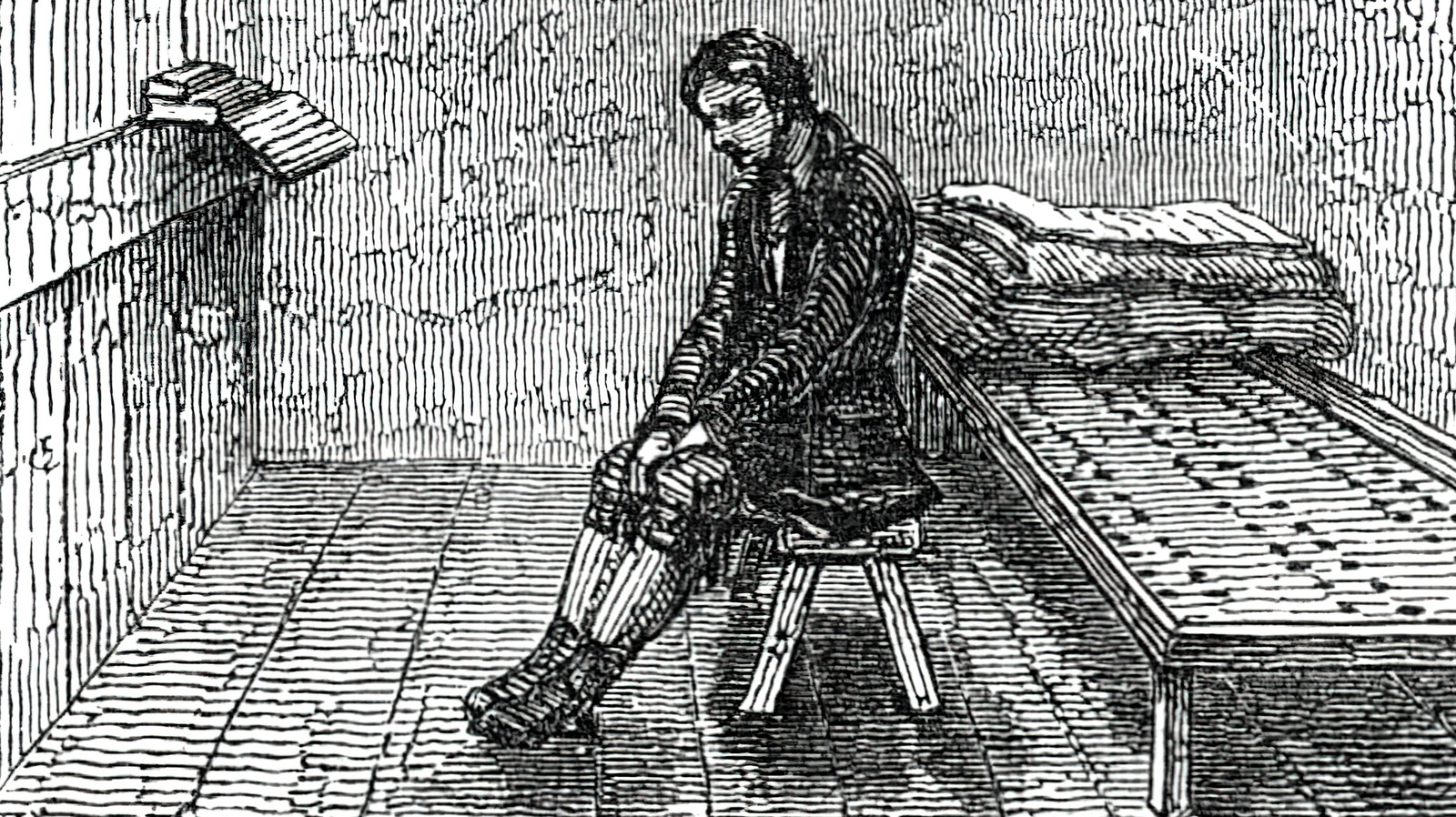
According to Victorian Era, about half-way through the century, the philosophy around prisons and criminal punishment began to change. The common idea became that most criminals were habitual offenders, and therefore prison itself was not going to change or reform their behavior. Because of this, the goal then became to essentially work them to the bone, and hope this would scare them from ever wanting to come back.
The 1865 Prisons Act implemented what they called “The Silent System” (via BBC). This new system was enforced by making prisoners do incessant, long, pointless, hard labor. Their motto became, “Hard Labour, Hard Fare, and Hard Board,” and the purpose was to break a criminal’s will by forcing them to do these tasks repeatedly. Some of these awful tasks included picking oakum (separating strands of rope) or turning the crank — simply turning a crank to no other purpose than to create exhaustion. Another punishment was walking the treadwheel, sometimes called the treadmill. Sometimes treadmills powered food mills or pumps, but other times, like the crank, it only served to exhaust and punish.
READ RELATED: George Tenney Pleads Guilty to Two Jan. 6 Felonies
In addition to the prisons that implemented the Silent System, there were also debtor’s prisons or workhouses. These were specifically for people who were not able to pay their debts or bills, and these people were also put to work. The difference was that their work was not as monotonous or tedious and actually produced goods like potato sacks and baskets. It was not until the latter part of the century that this kind of treatment for prisoners would be reformed.
Source:





